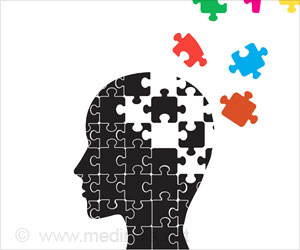In Down Syndrome condition, mouse strains with duplications of three regions on chromosome 16, which mirrors having a third chromosome 21 have been created.

Down Syndrome: New Insights
Affecting 1 in 800 live births, Down Syndrome is known as a ‘gene dosage disorder’ – meaning that it involves changes in the number of copies of a gene. People with Down Syndrome have three copies of chromosome 21 instead of two. Having three copies of certain genes on this chromosome causes aspects typical of Down Syndrome, but it’s not yet known which genes are responsible. Previous research has linked a gene called Dyrk1a to aspects of Down Syndrome, so the researchers wanted to test how it impacted craniofacial dysmorphology.‘In mice model with Down Syndrome, genetic traits associated with craniofacial dysmorphology which involve shortened back-to-front length and widened diameter of the head were observed. ’





Now working with Jeremy Green's group at King’s College London, they showed that mice with an extra copy of Dyrk1a had a reduced number of cells in the bones at the front of the skull and in the face. Also, cartilaginous joints at the base of the skull called synchondroses were abnormally fused together. These effects were partly reversed when the third copy of Dyrk1a was removed, showing that three copies of Dyrk1a are necessary to cause these changes in the skull. The researchers believe that having a third copy of Dyrk1a hinders the growth of neural crest cells that are needed to form the bones at the front of the skull.
Genetic Origin for Facial Changes in Down Syndrome
In addition to Dyrk1a, the research showed that three other genes also contribute to the changes in the skull, but more research is needed to confirm their identity.Victor Tybulewicz, Group Leader of the Down Syndrome Laboratory at the Crick, who worked with first author Yushi Redhead, said: “There’s currently limited treatments for the aspects of Down Syndrome which have a negative impact on people’s health, like congenital heart conditions and cognitive impairment, so it’s essential we work out which genes are important.
“Understanding the genetics involved in the development of the head and face gives us clues to other aspects of Down Syndrome like heart conditions. Because Dyrk1a is so key for craniofacial dysmorphology, it's highly likely that it’s involved in other changes in Down Syndrome too.”
Researchers at King’s College London used shape-measuring tools to map the changing skull shape of the mice. These showed changes in skull shape that were remarkably similar to those seen in people with Down Syndrome.
Advertisement
This research forms part of an ongoing project to understand the genetics of Down Syndrome. The researchers will next aim to identify the genes involved in heart defects and in cognitive impairment, bringing us a step closer to understanding how to develop targeted treatments for aspects of Down Syndrome which impact health.











